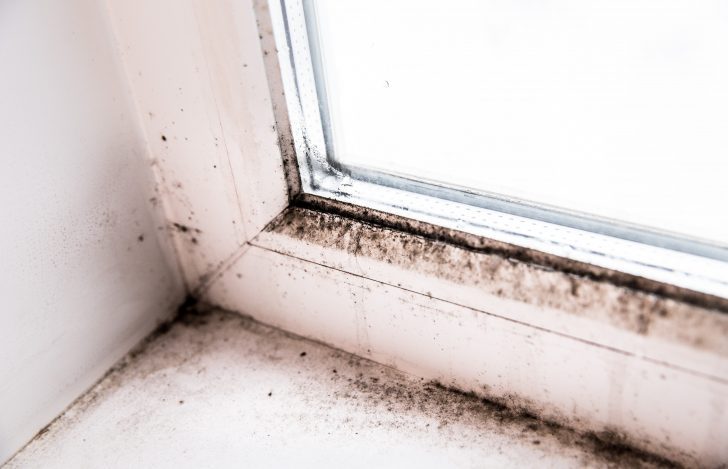Dealing with a Mold Infestation in Your Apartment

22Jun
Dealing with a Mold Infestation in Your Apartment
Mold is often a sign that there’s a leak somewhere. Once water has seeped inside of walls, floors or ceilings, moist conditions help mold bloom and thrive there, hidden out of sight - or in sight for that matter. Mold infestations are serious. If you’ve experienced flooding or a leak in your roof, chances are there might be mold somewhere in your building. And that’s an issue you want to get resolved as soon as possible: mold doesn’t just damage the building; it can also pose serious risks to your health.
However, not all mold is created equal. There is toxic / black mold (stachybotrys chartarum), and then there are more run of the mill molds, such as penicillium aspergillus, which can still be harmful at high levels. Unless you happen to be a mold hobbyist (which, you know, would be a strange hobby, but hey it’s your life), you’re not likely going to be able to know what kind of mold you have unless you get testing done.
To check your inner hypochondriac, most homes in SF are going to have some low level mold. In fact there are mold spores in the air we breath when we are outside - this is normal. If you see a few black spots on the caulking of your bathtub it’s (probably) nothing to freak out about.
However, if you’ve had a major leak or start experiencing unexplained health issues such as asthma, difficulty breathing, or headaches when you are home and you can’t figure out why, it is time to take action.
If you know or believe that your apartment has mold, here are some basic steps to take to make sure you’re covering your bases.
Inform your landlord (in writing)
It is difficult to hold your landlord accountable for conditions they don’t know about - or can claim they didn’t know about. If you detect moisture or dampness, water intrusion, or visible mold in your unit, notify your landlord or property manager, describe the problem in writing, and keep copies of everything.
As we’ve advised before: start a file with photographs, written descriptions of the problems including date, and emails or letters to and from your landlord. You’ll want to have evidence of when the problem started and what you did about it, in case this becomes a legal matter later on. If your landlord refuses to make repairs make sure you properly documented your requests.
Consult your physician
If you think you are living with mold or mildew and that it is affecting your health, go to the doctor. Some symptoms we hear about are skin rashes, respiratory and autoimmune issues, and migraines. It can be hard to track causation for any of these symptoms, as a host of irritants can trigger them. Nevertheless, if you end up in court claiming that your apartment’s mold made you suffer, you’ll want to have medical records to back you up.
Testing
There are ways to test whether high levels of mold are present. In an ideal world your landlord would hire a qualified third party mold testing company to take air and surface samples and then share the results with you. The reality is that this doesn’t always happen. If your landlord refuses to do any testing you might consider paying such a third party to test for mold yourself. This is where tenants often balk. Reputable companies charge upwards of $500 to perform mold tests. Unfortunately, most attorneys will want to see hard evidence like mold test results before agreeing to represent clients. If nothing else testing can provide some peace of mind.
Repairs
If test results do come back positive for high levels of mold, be prepared that there may not be a quick fix. Proper abatement can involve tearing out floors, walls and ceilings--which can mean having to move out temporarily. State law requires that landlords pay tenants of rent-controlled apartments $320 per day that they’re displaced from their homes for repairs or capital improvements that last 20 days or less. For displacement lasting over 20 days eligible tenants are entitled to relocation payments of $5,890.
Be sure to get the names and contact info for the contractors or mold abatement crews who do the work. If you don’t trust your landlord or continue to experience health issues after you move back in, it’s not a bad idea for you to hire a third party to do a follow-up mold test after the fact, just to make sure the abatement worked.
Report Your Landlord to the City
If your landlord doesn’t take action, consider contacting the SF Department of Public Health. They’ll send an inspector out and, if your problem warrants it, serve your landlord a notice of violation. This can be helpful in compelling your landlord to act (if they refused to do so), and can be useful evidence for purposes of a potential lawsuit.
(A caveat: City inspectors don’t test the air quality, or lift up the floorboards to see what’s growing underneath. As a rule, they look for visible mold and water intrusion. This means that serious, but hidden, problems might not make it into the reports of city inspectors.)
Consider Moving Out.
Moving should be a last resort as there is no guarantee that you will be compensated in the form of a lawsuit, and litigation can be time consuming. But if mold is damaging your health and impacting your daily life, you may have to decide what's more important - your health or your rent control. If you’ve followed the steps above and your landlord still refuses to remediate the issues, you may have grounds to sue for constructive eviction. However, before you choose to give up your place, consult an attorney who represents tenants: they’ll be able to evaluate whether you have a case, and let you know what documentation you’ll need.
It’s important to remember that mold and mildew are typically symptoms of larger issues with water intrusion, which themselves constitute habitability defects and can give rise to legal liability for your landlord. Remember, each situation is different. If you’re having trouble navigating the process or aren’t sure what to do next, you should always contact an attorney, but hopefully by using these tips you'll be better equipped to handle mold.
Related Posts You Also May Like
Get Started
For more information or to discuss your legal situation, call us today at (415) 649-6203 for a phone consultation or submit an inquiry below. Please note our firm can only assist tenants residing in San Francisco, Oakland & Berkeley.





